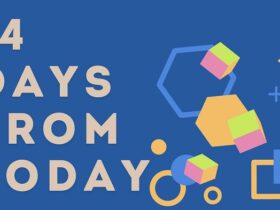There are certain points in life at which opening up your wallet is unavoidable. If you’re making a major purchase, like that of a house or a car, then you’ll need a correspondingly large source of cash to finance it.
Where this money comes from will depend on your circumstances. There are a few different options to consider. Let’s take a look at how you might approach the decision.
Evaluating Your Financial Needs and Goals
Your behaviour as a consumer should be linked to your broader financial objectives. If you want to put money aside every month for retirement, then spending extra on luxury items might undermine this objective.
This is especially the case with your major purchases. Put some thought into how much you’d like to spend, and how this can be reconciled with what you want to do with your money over the long term.
Types of Loans Available for Large Purchases
In many cases, it makes sense to take out a loan for large purchases. This will allow you to avoid having to wait for months, or even years, to save the necessary amount. If you’re relying on the item you’re purchasing to earn a living, then this might be cost-effective, even after interest payments are taken into account. If buying a new car allows you to successfully apply for a new job, then you might find that you’re better off with the debt.
Loans come in many different varieties. There are secured loans, which involve giving the lender the right to take possession of a given item in the event that you can’t pay. Then there are unsecured loans, which don’t involve this mechanism, and which therefore tend to involve higher interest rates.
Benefits of Secured Loans for Large Expenses
When a loan is secured, it confers less risk to the lender. If you default, then the lender can always reclaim the asset, which prevents them from losing too much. This lower risk tends to be reflected in lower interest rates, and in higher loan limits. This makes this kind of loan perfect for high-value assets.
In order to protect the asset you have used to secure the loan, it’s vital that you make your payments promptly and reliably. Many financial experts advise against this form of finance, but the ease with which it can be secured makes it attractive for many.
Exploring Alternative Financing Options
Loans are a popular way to pay for big purchases, but you might also want to look into other ways to get the money. Lease-to-own arrangements, for example, let you utilize an asset—say, a car—while making slow payments until you own it entirely. Another path, particularly if you want to avoid debt, may be personal savings or diving into an emergency fund. Though they usually carry higher interest rates and should only be taken into consideration for temporary borrowing, credit cards may also be utilized. Certain companies also provide in-house financing or payment plans, which might have very low or zero-interest rates. Knowing and evaluating these choices will enable you to make wise selections reducing risks and matching your financial objectives.
Budgeting for Monthly Loan Repayments
If you have a strategy for repayments, you’ll tend to stand a better chance of making them each month. Come up with a budget for your repayment period. Work out how much spare cash you will have to spend each month, and then divide the money into weekly chunks. This will help you to avoid overspending!










Leave a Reply